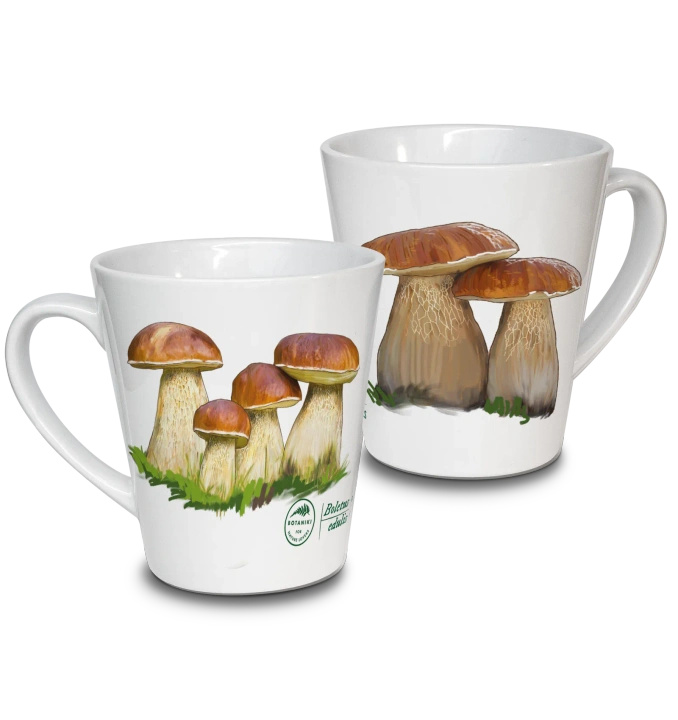Penny bun — latte mug
- With a 300 ml ceramic mug with your favorite plant - your morning coffee will get a unique character.
Subscription products in your shopping cart
Set one delivery frequency for all subscription products in your cart every:
Subscription products in your shopping cart
Penny bun
Boletus edulis
The penny bun (Latin: Boletus edulis), is an edible forest mushroom of the boletus family. It naturally occurs in the forests of the northern hemisphere. Quite common in Poland, it can be found in both coniferous, deciduous and mixed forests, and forms mycorrhizae with many tree species, including spruce, oak and pine. In addition to the roots of the actual tree species, the penny bun prefers the company of two more species: the reddish toadstool ( Amanita rubescens) and the scleractinian toadstool ( Amanita excelsa).
Porcini - the popular name for this boletus - is the object of desire for all mushroom hunters. As summer draws to a close and the forests are no longer too dry, avid mushroom hunters go on the hunt looking out for the distinctive hats. The cap of a boletus is 6- 25 centimeters in diameter, young fruiting bodies are white, later cream-colored, and with time - light brown and dark brown. The true cap is initially smooth, later more convex, older specimens are cushion-shaped and flatter.
Under the hat are tubes usually white or cream, and in older specimens - yellowish or olive. The stem of the boletus measures about 5- 20 cm, cracked and deep-set, and elongates as the mushroom grows. In the upper part of the stem, a pattern of fine reticulation, characteristic of this species, is visible.
The flesh of the cep is hard, firm, cream-colored - with a wonderful aroma and a wonderful nutty flavor. Not surprisingly, it is considered one of the best noble edible mushrooms. The penny bun is distinguished among mushrooms by its high protein content of about 5.5%.
The Latin name edulis - means "edible". Another popular term for this species is: edible boletus. In the past, it was still said: proper mushroom, right mushroom, right mushroom, cep mushroom, oak mushroom.
Unfortunately, logging is causing the disappearance of this species, and a drastic decline in numbers has been recorded in many parts of Europe.
Source: https://atlasgrzybow.online/








